A range of industries such as manufacturing, construction, consumer goods, and electronics now use advanced materials and processes more than ever before to remain competitive. The most critical factors they need to address are improved product quality and precision as well as methods that make plastic materials easier and faster to mold or form. In addition, new product manufacturers have to react to customer requests for higher tensile strength and the need to comply with tighter industry specifications and the latest environmental regulations. In turn, their raw material suppliers are forced to deliver formulations that better meet these requirements.

The Ingeo 3251D grade biopolymer from NatureWorks is intended for the consumer goods industry such as electronics, cosmetics, housewares, toys, and custom molds — without using petroleum-based plastics.
Fiberglass
For instance, most personal watercraft (PWC) hulls are made from glass-fiber reinforced polyester resin (fiberglass) using a robotic shell or sheet-molding process. Unfortunately, although fiberglass is one of the most attractive and durable materials to use for boats of all shapes, it is the heaviest material. So it was probably no surprise when a PWC maker challenged Camoplast, their supplier, to produce a lighter, more efficient fiberglass hull. To comply and develop this lighter material, it joined forces with two other suppliers, Bayer MaterialScience and KraussMaffei. After some intense engineering effort, they formulated a longer glass fiber for large parts and now produce it in what is called the Long Fiber Injection (LFI) process.
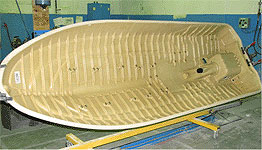
Camoplast Long Fiber helps produce large parts using the long fiber injection process. The first application is a personal watercraft hull that will be available this summer.
Here is how they do it. Long glass fibers are injected along with polyurethane resin in a one-step process. A fiberglass chopper attaches to a polyurethane dispensing mix-head, which in turn, connects to a robot. The head moves over an open-mold cavity while it simultaneously dispenses both the long glass fibers and the polyurethane resin. At the end of the pour, the mold closes to form the part.
To help bring the process from just a concept to the real thing, Bayer modified an existing grade of its polyurethane system (Baydur STE 814) to meet the special requirements. This new grade can be open for 60s, enough time to let the material flow around the fibers easily, even in tight spaces to make what are called “designed-in strengthening ribs.” At the same time, KraussMaffei almost doubled its LFI glass output capacity from 180 gm/s to 300 gm/s. The first application of this method is a unique, lightweight PWC hull scheduled to hit the market this summer.
Biopolymers
Another product intended for the consumer goods industry is a new injection-molding grade of a special biopolymer, which does not contain any petroleum derivatives, but still retains the engineering characteristics of petroleum-based plastics. The new resin, called Ingeo, comes from NatureWorks LLC. It complies with environmental regulations and is currently used in laptops, mobile phones, and other consumer goods.
In addition, Ingeo has several benefits over conventional polymers. For example, it typically requires shorter cycle times and uses a mold and screw assembly that can also handle styrenics such as GPPS, SAN, HIPS, and ABS. The company anticipates that it will save energy, and that some injection molders will adapt it for thinner-walled parts such as for GPPS and SAN materials. Ingeo is suitable for either clear or opaque products, those that are currently molded in GPPS, HIPS, ABS, or PET, and others that require impact resistance similar to medium-impact polystyrene.
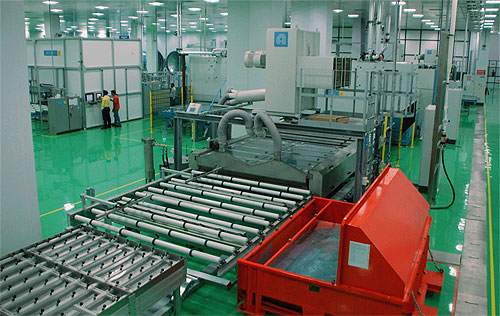
The SunFab Thin Film Line meets all manufacturing, module efficiency, and yield specifications for making ultra-large solar modules.
Photovoltaics
In the utility arena, many companies are researching ways to reduce the cost of producing electricity from solar cells. For example, Moser Baer photovoltaic operations in India recently installed the SunFab Thin Film Line purchased from Applied Materials to produce thin film photovoltaic (PV) modules. The company claims to have a new standard product line that can increase solar-panel manufacturing capacity and achieve the lowest production cost per watt.
The 40-MW capacity line at Moser Baer is reported to be the largest thin film solar line in India and the company claims that it will manufacture the world’s largest (2.2m x 2.6m) solar modules. PV modules produced by the SunFab line have been certified by the International Electrotechnical Commission, which verifies that they meet stringent performance and safety specifications under harsh environmental conditions.

Moser Baer’s photovoltaic operation uses a SunFab unit to provide innovative PV products that can reduce electric power-generation costs and provide a less-expensive approach for clean and renewable energy.
These “ultra-large” modules are ideal for utility scale applications where they can reduce installation costs by more than 17% compared to smaller scale modules. Applied Materials’ goal is to help accelerate the growth of the solar market by driving down the cost per watt of solar energy through standardization, scale, and efficiency.
Composite coatings
Another approach that can make composite coating production more efficient employs a new metal-clad composite (MCC) process. The uniqueness of MCC is in the way that it combines a composite coating (cladding) with stereolithography (SL) and special resins. The MCC process electrically applies a copper-nickel composite coating to plastic with stereolithography techniques. It is a novel approach to making rapid prototypes and short production runs of metallic parts.

Thinner wall part thicknesses can be specified using DSM Somos’ metal clad composite processes compared to typical investment casting methods.
The cladding makes the part more durable and their features resemble solid metal closer than can normally be done through stereolithography alone. Moreover, its cost is one-third to one-fourth that of machined or die cast parts – depending on their size and complexity.
Metallic parts can be designed and functionally tested under real-world conditions for longer cycles than is possible with uncoated stereolithography parts. It also reduces time because stereolithography composite prototypes and short production runs can be created far faster than machined or die-case parts in many cases. Several variations of the same part can be quickly and cost-effectively tested. DSM Somos is spearheading new product design using MCC.

After a part shape is created using stereolilthography, all surfaces are prepped for adhesion with a special wash that deposits ions onto the plastic. This plastic model, courtesy of DSM Somos, is then dipped in a bath where it receives a thin layer of copper.
When a part design must be changed in a mechanism that includes several interrelated parts with close tolerances, use SL, which is a more cost-effective technique. But unfortunately, it is not intended to stand up to strenuous testing; it may only last a few cycles before wearing out.
Alternatively, machined or die cast parts may be a superior method to make these parts.
Metal-clad composite parts are faster and less expensive to produce, and can move into the test phase more quickly. The process accommodates several permutations at once so they can be tested side-by-side instead of one at a time. Although the metal cladding may not prove as durable as a pure metal part over a large number of cycles, it is more than sufficient for most test labs and low-volume production runs. Additional benefits include the ability to specify walls that can be made thinner than other processes can accomplish such as investment casting. Expensive parts also can be customized to handle more functions or to identify it as a particular brand. Furthermore, specialty parts can be created inside of other parts, such as holders to help route wire internally, and to improve the design without adding to the cost.
MCC techniques are particularly well suited for ergonomically testing metallic hand-held products. For instance, several hand-held medical devices can be made simultaneously with different dimensions and tested for fit, feel, approximate weight, and “ease-of-use.”
In addition, MCC techniques can make prototypes with improved physical properties such as EMI shielding, fire retardance, solvent resistance, and thermal conductivity. MCC prototypes and low volume production parts that are used in harsh operating environments can be tested more thoroughly.
Bonding and sealing
Finally, other materials are available that improve product strength and durability. For example, a range of industrial bonding and sealing applications incorporate next generation, two-part silicones. For instance, Loctite, a high-strength adhesive and sealant from Henkel Corporation, rapidly bonds metal, glass, and ceramic substrates and cures to handling strength in five to 50 min. Shelf life for these silicones exceeds 12 months at room temperature.
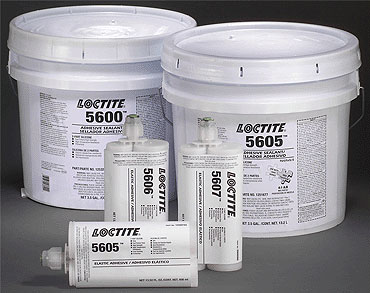
Loctite Two-Part Silicones are designed for a wide range of industrial bonding and sealing applications. For pneumatic dispensing, Loctite 5600 cures in five minutes, which makes it ideal for open-bond lines. By comparison, Loctite 5604 cures in 10 minutes and works best on closed-bond lines.
The adhesives have tensile strengths of 300 psi and support heavy components such as windows, skylights, solar panels, oven doors, stovetops, and outdoor signs and displays. Manufacturers can select from six formulations for manual or automated assembly applications. The relatively short fixture times of these silicones can eliminate those costly work-in-progress inventories that require from 12 to 24 hours to cure with traditional RTV silicones.
Two-Part Silicones resist temperatures up to 230°C, cure through large gaps and enclosed bond lines, require no primers, and emit little odor when dispensing. They also withstand extreme vibration, flexing, thermal shock, UV rays, water, outdoor temperature variations, and most cleaning solutions.
For more information:
Applied Materials
www.appliedmaterials.com
Bayer MaterialScience
www.bayermaterialscienceNAFTA.com
Camoplast
www.camoplast.com
DSM Somos
www.dsmsomos.com
Henkel Corporation
www.henkelna.com
KraussMaffei
www.krauss-maffei.de
Moser Baer
www.moserbaer.com
Nature Works
www.natureworksllc.com
::Design World::
Filed Under: Digital manufacturing, Die casting, Materials • advanced

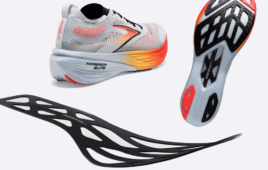
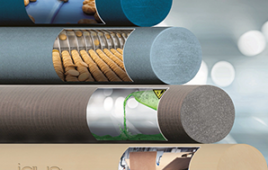

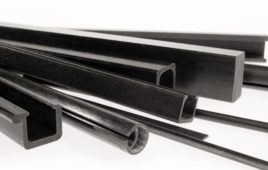
Tell Us What You Think!